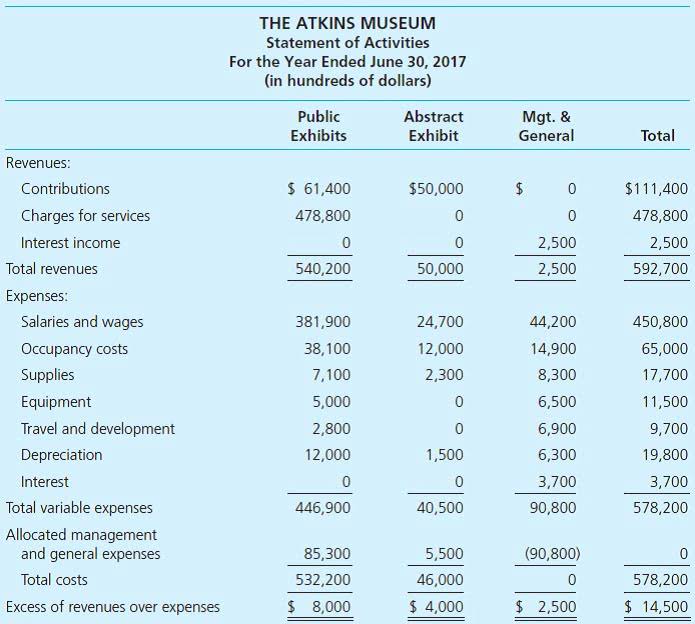Retained Earnings: Everything You Need to Know

For instance, during a particularly challenging year, XYZ Inc. experienced a significant decrease in sales due to an economic downturn. Thanks to their accumulated general revenue reserves, they were able to cover operating expenses, maintain employee salaries, and avoid taking on debt to survive the tough times. A revenue reserve is created from the net profit generated from the company’s core operations. It reconciles the beginning balance of net income or loss for the period, subtracts dividends paid to shareholders and provides the ending balance of retained earnings.
Why do companies retain accumulated earnings instead of paying dividends?
- Shareholders, analysts and potential investors use the statement to assess a company’s profitability and dividend payout potential.
- A secret reserve is created by underestimating the value of assets or overestimating liabilities on the company’s financial statements for internal purposes.
- Capital reserve refers to a reserve created from capital profits or gains a company earns through non-operating activities, such as selling assets, re-valuating investments, or capital contributions.
- In this section, we will take an example to see how we can create revenue reserves from the business’s profits.
- Now that we understand the basics and types of revenue reserve accounting, let us apply the theoretical knowledge to practical application through the examples below.
From picking the best strategy to taking care of all the setup and ongoing overhead, we make it easy and have helped create more than $500m in wealth for our customers. Shaun Conrad is a Certified Public Accountant and CPA exam expert with a passion for teaching. After almost a decade of experience in public accounting, he created MyAccountingCourse.com to help people learn accounting & finance, pass the CPA exam, and start their career. For example, a tech company might retain earnings to fund research and development for a new product line, ensuring it stays competitive in a rapidly evolving industry. The idea was to strengthen the company’s Bookkeeping for Painters core to serve its customers and shareholders better.
- While this may not be ideal for individual shareholders, it can be positive for the company.
- But in actuality, a company would be able to retain more when the “net profits” are noteworthy.
- – Company profits that don’t pay dividends due to factors such as reinvestment or holding on to the cash.
- And if we look at the ratio between “net profit” and “total capital employed,” we will get a clear idea of the company’s operational efficiency.
- Surplus reserve serves as a financial cushion for the company, providing a source of funds that can be used in times of need.
- For example, a tech company might retain earnings to fund research and development for a new product line, ensuring it stays competitive in a rapidly evolving industry.
What are accumulated earnings?

By retaining a portion of its profits as undistributed profit, a company can strengthen its financial position and improve its ability to weather economic downturns or other challenges. The accumulated earnings of a firm are profits generated, but not distributed to the shareholders as cash dividends or as corporate profit taxes. Instead, they are retained to be reinvested in a new business opportunity, to increase inventory levels, to lower long-term debt or to increase cash reserves. At the end of each fiscal year, the company retains a portion of its profits in the form of general revenue reserves, also known as retained earnings. These retained earnings are not distributed as dividends but are kept within the company for various financial purposes.

What are Accumulated Earnings?

Companies must carefully document the purpose of retained earnings to avoid penalties under AET regulations. For example, a manufacturing firm may allocate accumulated earnings to upgrade production equipment, enhancing efficiency and reducing operational costs. Reinvesting in new facilities, technology, or markets can drive growth and increase future profitability. This reduction happens because dividends are considered a gross vs net distribution of profits that no longer remain with the company. We built a platform to give everyone access to the tax and wealth-building tools of the ultra-rich like Mark Zuckerberg and Phil Knight.
Revenue vs. net profit vs. retained earnings

Net profit refers to the total revenue generated by a company minus all expenses, taxes, and other costs incurred during undistributed profits that have accumulated in the company over time are called a given accounting period. In summary, surplus reserve is a strategic financial tool that companies use to set aside a portion of their profits for future use. It provides a financial cushion for the company, helps fund growth initiatives, and demonstrates the company’s commitment to long-term financial stability. Undistributed profit is an important source of capital for companies, as it provides a pool of funds that can be used to support the company’s operations and growth initiatives.
